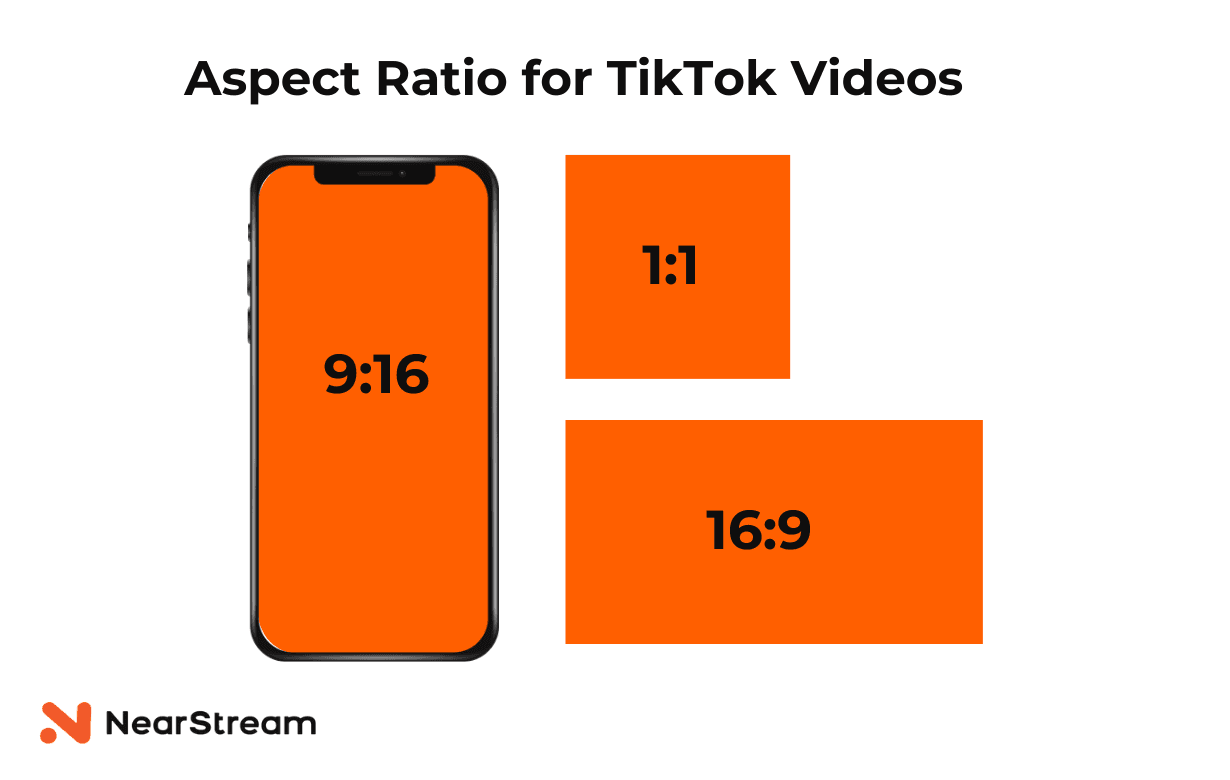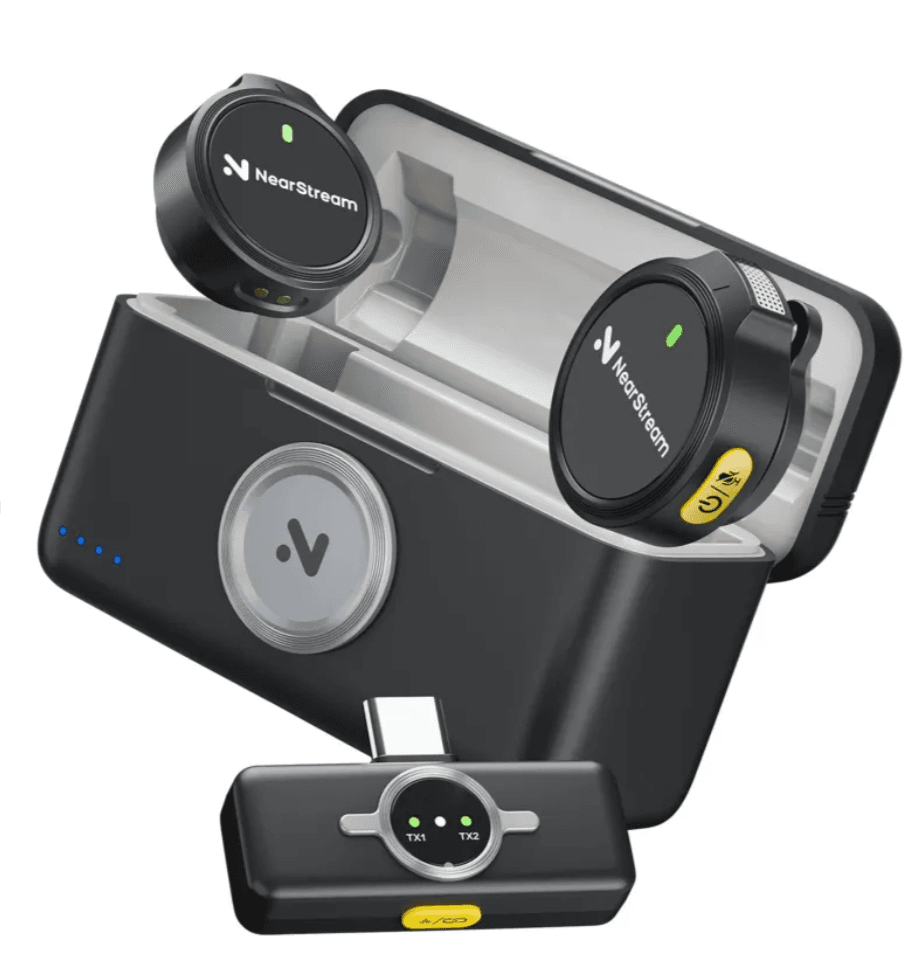Want to stand out on TikTok in 2025? It takes more than just creativity — you need the right video size, format, and gear to truly shine. In this guide, we break down the best TikTok video dimensions, aspect ratios, resolutions, and technical specs to help your content perform at its peak. Whether you’re a seasoned creator or just starting out, discover how to optimize your videos for maximum engagement and reach — with tips backed by platform trends and pro-level tools.
What is the Recommended TikTok Video Size?
TikTok’s recommended video size is 1080*1920 pixels — but this isn't just a random standard. This vertical Full HD format precisely matches the native screen ratio of most smartphones, which is essential for full-screen playback. Content creators who upload at this size ensure that their videos fill the screen without black bars or awkward cropping, leading to better viewer retention and higher engagement. Moreover, TikTok’s algorithm tends to favor content that appears polished and optimized for its mobile-first audience. This makes the 1080x1920 resolution not just ideal — it’s strategically important.
Best Aspect Ratio for TikTok Videos
The 9:16 aspect ratio isn’t just visually appealing — it’s an algorithmic advantage. TikTok is built around a vertical interface, and 9:16 ensures the video takes up 100% of screen real estate. This immersion reduces distractions and increases the likelihood of viewers engaging with your content (likes, comments, shares). Deviating from this ratio — say, using 1:1 or 16:9 — might technically work but risks lower engagement due to black bars or viewer inconvenience. Furthermore, many of TikTok’s editing tools, filters, and effects are optimized for 9:16, meaning you lose out on creative potential if you don’t follow this standard.

Max & Min TikTok Video Dimensions
TikTok supports a range of video dimensions, but the quality sweet spot remains at 1080x1920 pixels — the gold standard for mobile-first vertical viewing. However, creators often ask: What’s the actual minimum and maximum size I can upload? The platform technically allows videos as small as 540x960 pixels and up to 4K (2160x3840 pixels) on select devices and regions.
⚠️But let’s be clear: just because you can upload low-res or ultra-high-res content doesn’t mean you should.
Minimum Dimensions: 540x960 Pixels
While TikTok allows uploads at this low-end resolution, videos under 720p (i.e., 1280x720) may look blurry or pixelated on modern screens. This not only reduces visual appeal but can also signal to TikTok’s algorithm that the content is “low-effort.” In a competitive attention economy, visual clarity is part of your brand. Unless you're intentionally going for a lo-fi aesthetic, aim higher.
Maximum Dimensions: 2160x3840 Pixels (4K)
Uploading in 4K might sound like the ultimate flex — more pixels, more detail, right? Not quite. TikTok heavily compresses video during upload, especially if the file exceeds a certain threshold in size or bitrate. If the source footage isn’t captured with a high-quality sensor, the compression can make 4K look no better — or even worse — than properly optimized 1080p.
Moreover, larger files take longer to upload, and viewers on weaker connections might experience playback lag. The performance-to-size ratio of 1080x1920 remains unbeatable.
📊TikTok Video Dimension Comparison Table
Resolution (Pixels) | Aspect Ratio | Type | Visual Quality | Platform Treatment | Recommended Usage |
|---|---|---|---|---|---|
540*960 | 9:16 | Low-end | Poor/blurry | Risk of downranking | Avoid if possible |
720*1280 | 9:16 | Basic HD | Acceptable | Light compression | Budget content |
1080*1920 | 9:16 | Full HD | Crisp&Clear | Standard compression | ✅ Recommended |
1440*2560 | 9:16 | High HD | Excellent | May be compressed | Pro-level content |
2160*3840 | 9:16 | Ultra HD(4K) | Sharp | Depends on capture gear | Depends on capture gear |
TikTok Video File Format & Size Requirements
TikTok supports MP4 and MOV file formats, both widely used in mobile and camera recordings. TikTok currently supports MP4 and MOV file formats, with a maximum file size of 287.6 MB for standard users and up to 2 GB for ads or TikTok for Business accounts. Video ads have a higher limit of 500 MB. TikTok recommends a frame rate of 30fps.
But content creators need to consider not just these hard limits, but how file size interacts with video quality and upload speed.
Large files can lead to slower uploads and may be subject to additional compression, which could affect sharpness and audio sync. To maintain professional audio-visual quality, creators should use a clean export codec like H.264 for video and AAC for audio — both of which are TikTok-friendly. Using proper encoding helps avoid glitches, pixelation, and audio lag. Make sure to compress your files efficiently without sacrificing clarity. Using uncompressed or poorly encoded formats may introduce stutters, color shifts, or desync issues after TikTok processes the video.
TikTok Vertical vs Horizontal: Which Performs Better?
While TikTok technically allows both vertical (portrait) and horizontal (landscape) videos, vertical content (9:16 aspect ratio) performs consistently better in terms of engagement, watch time, and algorithmic visibility. TikTok was designed as a mobile-first app — meaning that users hold their phones vertically. This default behavior shapes not only user expectations but also how the app’s interface delivers content.
Portrait videos take up the full screen, allowing for a more immersive, uninterrupted viewing experience. On the other hand, horizontal videos typically display with black bars or require the viewer to rotate their device — introducing friction and increasing drop-off rates. According to multiple analytics studies, vertical videos achieve 30–50% more engagement than horizontal ones on average, particularly for short-form storytelling, vlogging, dancing, and product showcases.
However, horizontal content still has its niche — such as cinematic videos, drone footage, or gaming streams — where wide framing is essential.
📱Vertical vs Horizontal TikTok Video Comparison
| Feature/Scenario | Vertical(9:16) | Horizontal(16:9) |
|---|---|---|
| Screen Fit | ✅ Fullscreen on TikTok | ❌ Black bars on top/bottom |
| Algorithm Preference | ✅ Highly favored by algorithm | ❌ Less frequently pushed |
| Content Style Fit | 🌟 Talking-heads, lifestyle, reactions, dances | 🌟 Cinematic, travel, wide landscapes |
| Editing&Filters | ✅ Fully supported by TikTok effects | ❌ Limited filter support |
| Brand/Product Showcase | 🌟 Excellent for close-ups & unboxings | 🌟 Better for long shots or full-scene setups |
Content Quality vs. Video Quality: What Matters More on TikTok?
On TikTok, content quality trumps production value — but only to a point. A compelling hook, entertaining story, or unique personality can outperform high-production videos that lack direction. Still, poor video or audio can damage credibility and lead to early drop-offs. The best creators combine storytelling with clean visuals and clear sound.
While high video resolution and technical specs help your content look professional, they’re not the only factors that matter. On TikTok, content quality consistently outperforms production quality when it comes to viral potential. A well-lit, crisp 1080p video won’t retain viewers if the hook in the first 3 seconds isn’t compelling.
TikTok’s algorithm prioritizes watch time, replays, comments, and shares, all of which are more directly influenced by storytelling, pacing, humor, and relatability than pure resolution. That said, poor video or audio quality can hurt content performance, especially when it distracts viewers or makes the message unclear.
That’s where equipment like the Nearstream AM25X condenser microphone or a wireless lapel mic becomes essential — not to make you “sound fancy,” but to ensure viewers clearly hear your voice, especially in busy environments. Combine great content ideas with reliable audio and visual gear, and you’ll unlock TikTok’s full potential.


2025 TikTok Viewing Trends & Video Dimension Insights
Brand Chem: From Storytelling to Story Sharing
TikTok's 2025 report introduces the concept of Brand Chem — the chemical reaction that occurs when brands authentically connect with creators and communities. Instead of simply broadcasting messages, brands are encouraged to co-create narratives, empowering creators and fans to become part of the storytelling process.
Audiences are tired of traditional, one-sided marketing. On TikTok, users want to see brands that behave more like participants than advertisers. That means tapping into trends, collaborating with real creators, and building conversations instead of campaigns.
Identity Osmosis: Blending Brand and User Values
TikTok predicts that in 2025, successful brands will melt into the identities and values of their audiences. This trend reflects a shift from brands trying to define culture to brands responding to it — adapting their voice, aesthetics, and content to reflect community interests.
Gen Z and Gen Alpha want to support brands that mirror their beliefs — whether that’s sustainability, inclusivity, or transparency. Authenticity and relatability now drive loyalty, and brands must evolve alongside their audience's shifting identities.
Creative Catalysts: AI-Driven Creativity and Risk-Taking
The report calls on creators and brands to embrace new tools like generative AI and shift from perfection to experimentation. TikTok's platform is designed to reward bold, original creativity, even if it means being a little messy or unpredictable. This trend encourages brands to take creative risks and use AI to enhance scale, localization, and content personalization.
TikTok is no longer a platform for just dance videos or comedy skits. It’s a launchpad for AI-powered storytelling, motion design, deepfake filters, and real-time audience collaboration. Those who master these creative tools will stay ahead in an increasingly competitive creator economy.
As TikTok matures, we’re seeing a shift toward longer, more refined content. Many creators are moving beyond 15-second trends and embracing 60-second storytelling or even 3-minute educational clips. Higher-resolution videos with thoughtful editing are gaining traction, especially among professional influencers. Viewers are also responding positively to clearer sound and visually consistent formats. This makes a compelling case for creators to invest in pro-level gear and strategic video formatting.
Shorter videos with fast-paced editing and clear visual hierarchy are performing better. Vertical content with clear subject framing and center-weighted composition tends to retain viewers longer. This trend also emphasizes the need for video stability and dynamic lighting, making equipment like the streaming camera invaluable.

FAQ: TikTok Video Size & Resolution
Q: What’s the best resolution for TikTok videos?
A: 1080x1920 pixels. It’s the native Full HD vertical format TikTok favors.
Q: Can I upload 4K videos to TikTok?
A: Yes, but TikTok will likely compress it. Use high-end devices like the Nearstream VM20 for better post-compression clarity.
Q: Should I shoot in 30 or 60 FPS?
A: 30 FPS is fine for most content. Use 60 FPS for sports, dancing, or fast movement videos.
Q: What file type should I export in?
A: MP4 using H.264 codec for video and AAC for audio.








































































